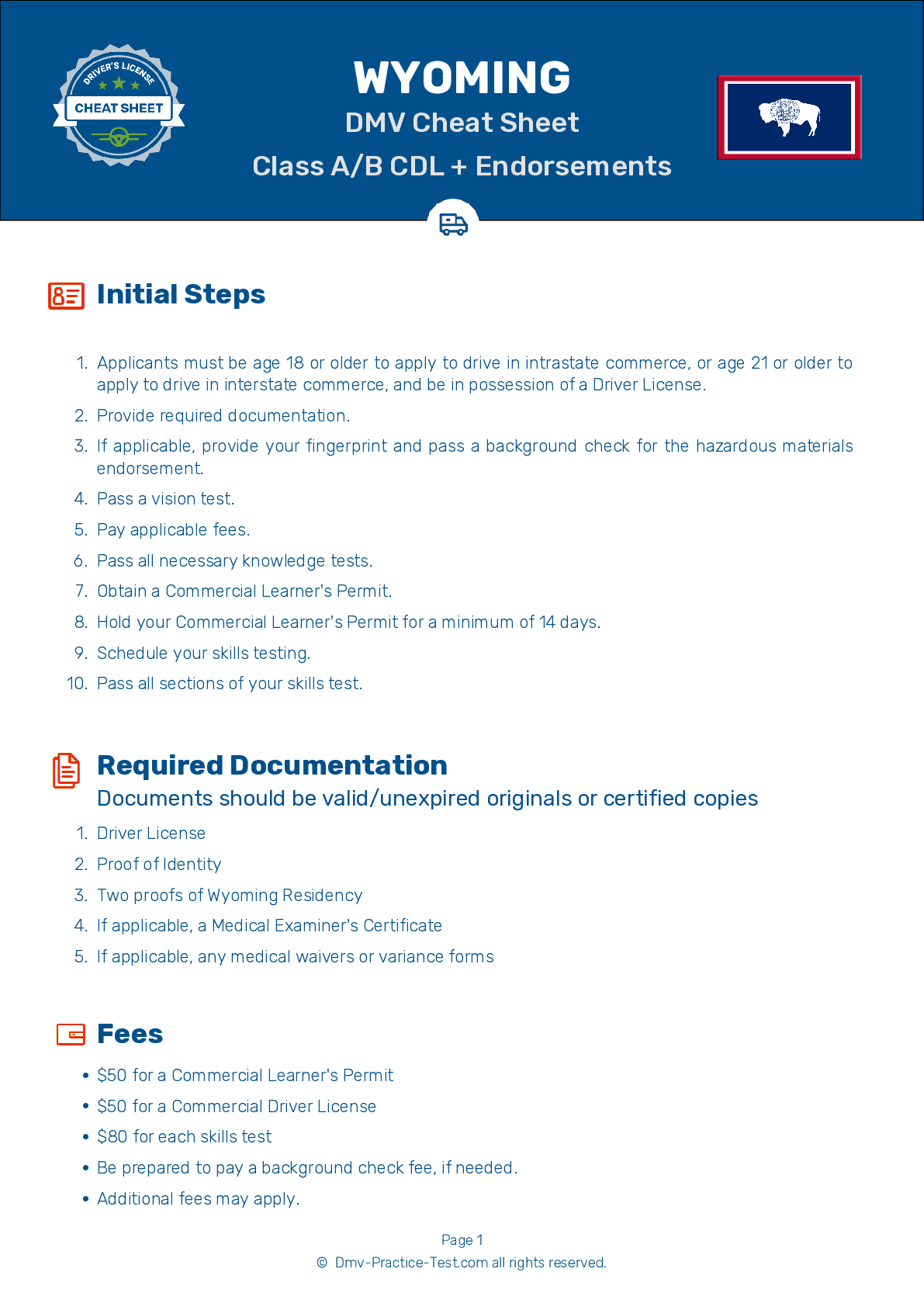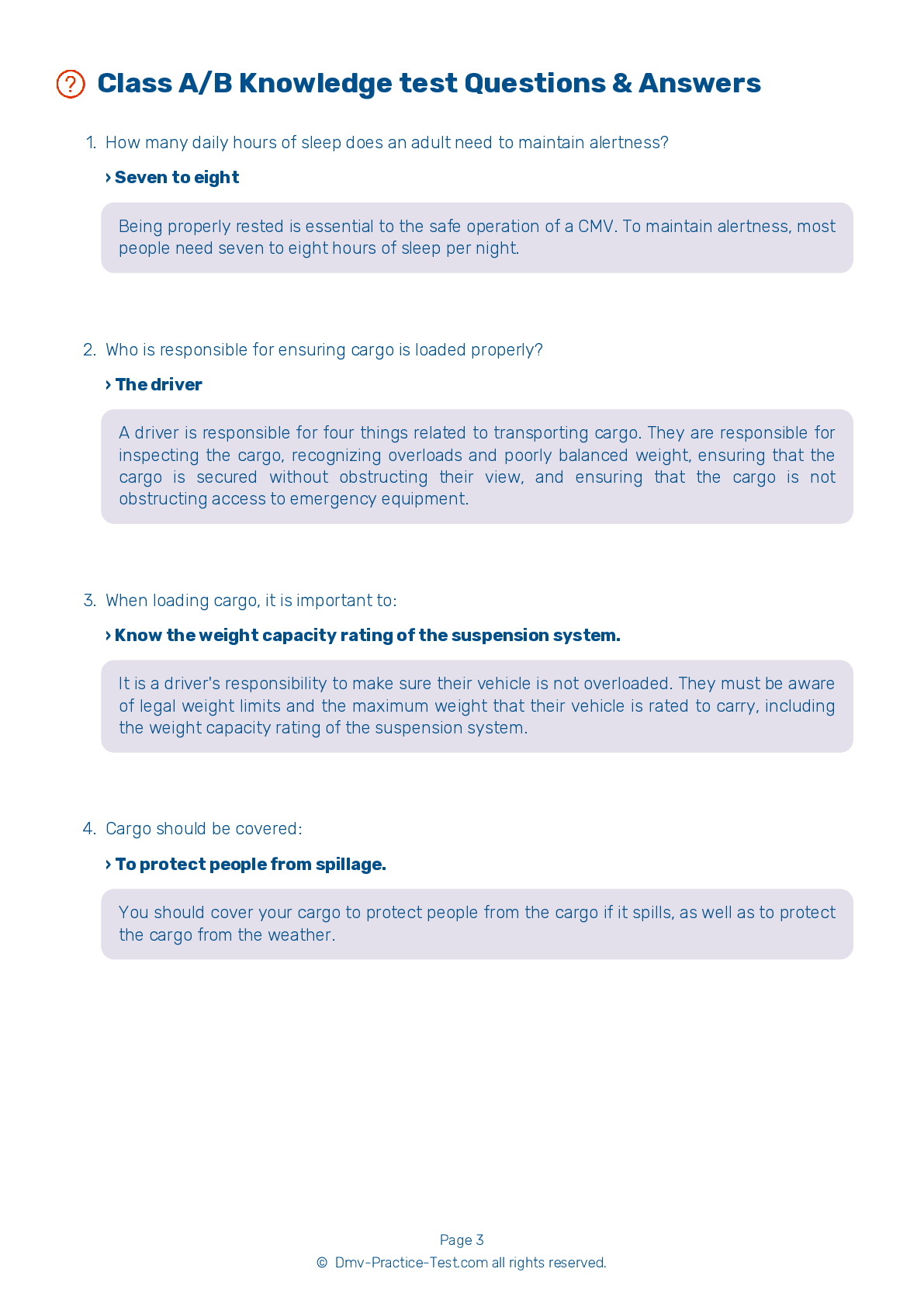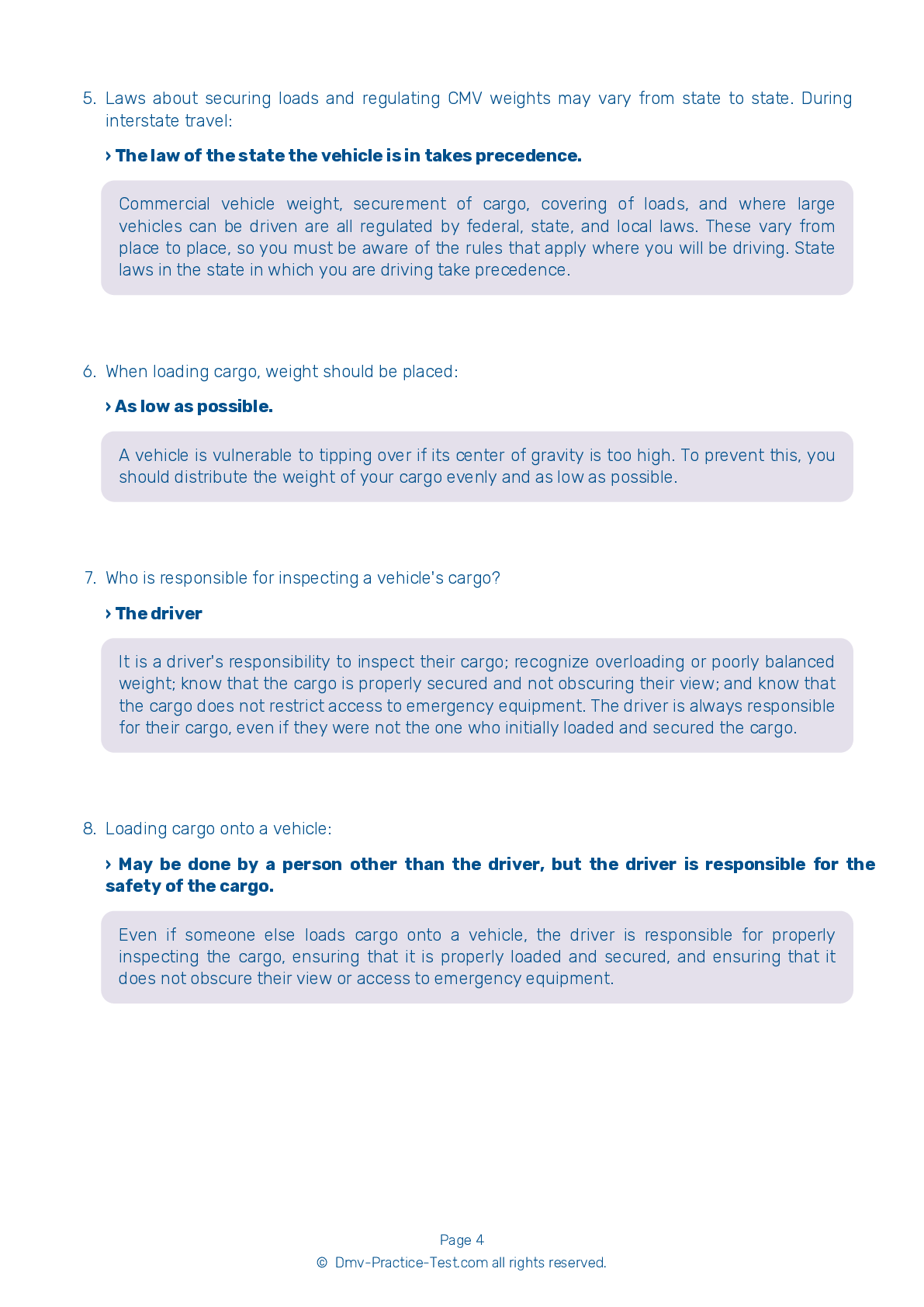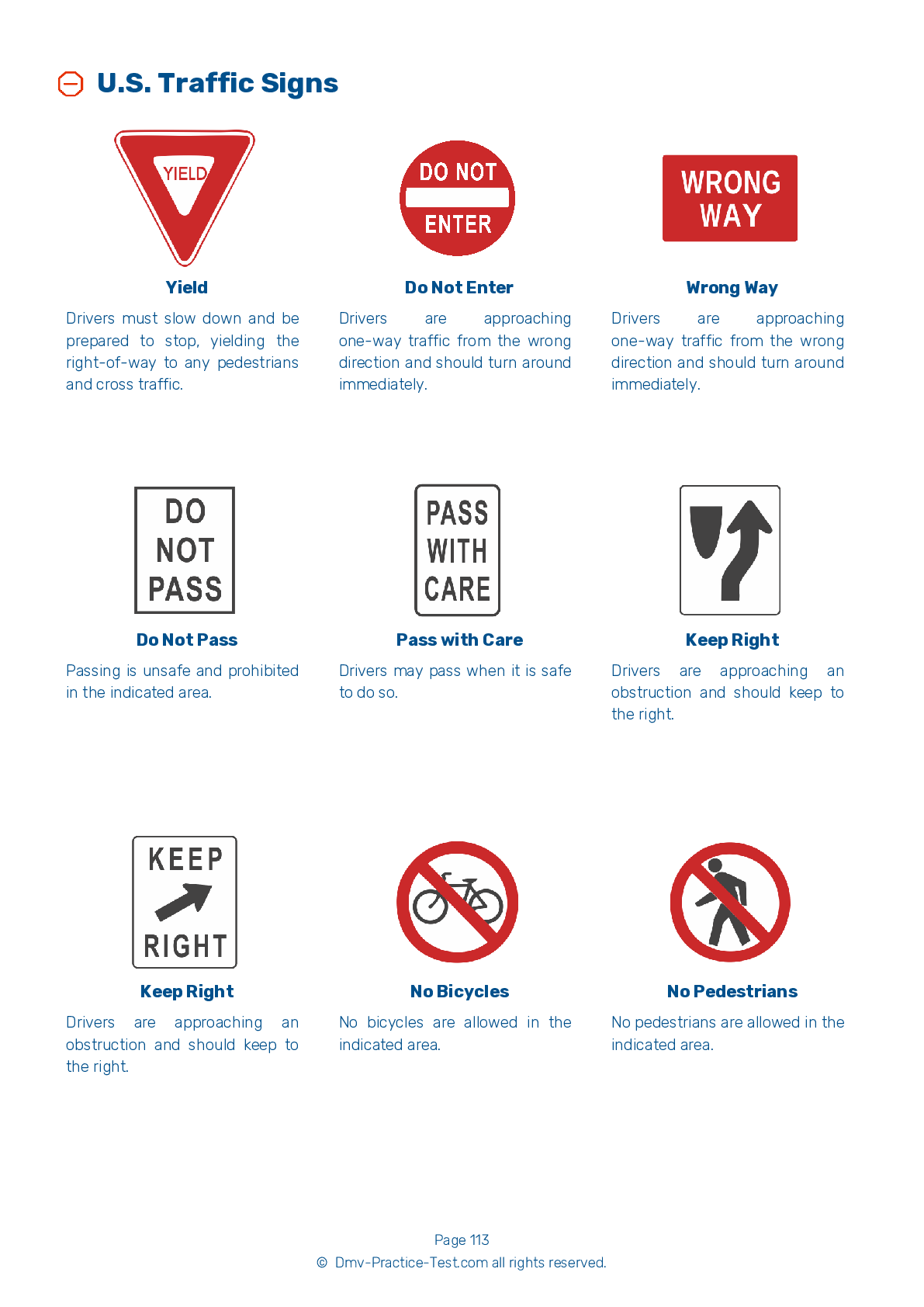Class A Driving Test | Wyoming 2026 #2 Page 5 of 7
Train for FREE online with our Wyoming class A license test. The official exam test consists of several obligatory parts, with all of them checking your knowledge of different blocks of road rules. If you need to obtain a WY CDL class A permit in 2026, practice as much as possible. Free sample tests published on our website will help you check and improve your knowledge and boost your grades. Please bear in mind that CDL class A requirements may vary from state to state.
29 . When pulled over to the side of the road, you should:
When stopped on the side of the road, be sure to turn on your vehicle's four-way emergency flashers, especially during times of lowered visibility. Place warning devices within 10 minutes of being stopped.
30 . If planning to back a vehicle where there may be overhanging objects, a driver should:
Because you can't see everything behind you, driving in reverse is always dangerous and should be done only when necessary. Before backing into an area, you should exit your vehicle and inspect the path of travel to check for potential hazards, especially overhanging objects that would otherwise be difficult to spot in a mirror.
31 . When you need to stop in an emergency, you should:
If you need to make an emergency stop, you can use either the controlled braking method or the stab braking method. It's important to brake in a way that keeps your vehicle traveling in a straight line while still allowing you to turn, if necessary.
32 . If using the spring brakes while hauling a heavy load, a complete stop will:
Spring brakes will activate in a vehicle with air brakes if the pressure in the air system becomes too low. A heavily loaded vehicle will take a long time to stop when using only the spring brakes because the spring brakes do not work on all axles.
33 . If you identify a large box in your lane on the road ahead, you should:
Slow down and be very careful if you see foreign objects in your lane. Remember that even something that seems relatively light and harmless, like a cardboard box, could contain harder or heavier items that could cause damage to your vehicle.
34 . The two indicators that determine when you should upshift are:
There are two indicators that determine when you need to shift into a higher gear. One indicator is the engine speed (rpm). You should read your vehicle's manual to learn its rpm range and shift up when you reach the top of that range. The other indicator is road speed (mph). You should learn which speeds each gear can accommodate, then keep an eye on the speedometer and shift up as needed.
35 . When inspecting your tires, you do not want to find:
There should be at least 4/32 of an inch of tread depth in every major groove on front tires and 2/32 of an inch on other tires. Valve stems should not be cut or cracked. Tire sizes should not be mismatched.
See the exact questions that will be on the 2026 Wyoming DMV exam.
99.2% of people who use the cheat sheet pass the FIRST TIME
Lillian MCcranie explains how our CDL study guide was helpful in passing the exam and recommends it to everyone.
Cameron tells us how he purchased the CDL exam, and found it to be a useful tool which helped him pass the exam and find a job.



